“Bride of the Libyan Sea”
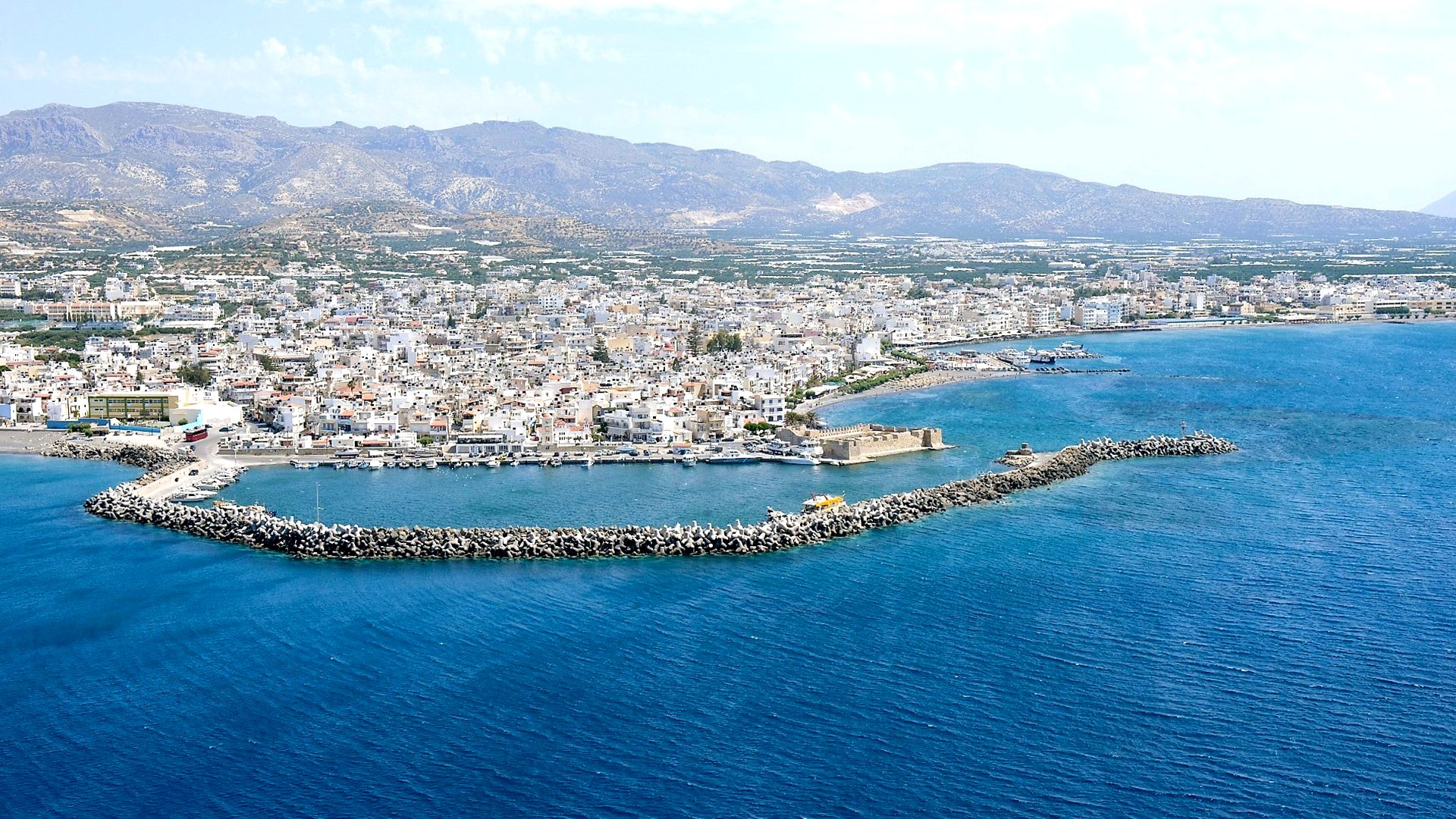

The word Ierapetra (Ιεράπετρα) means “sacred stone”. It is the name of a town and community located south of Agios Nikolaos and southwest of Sitia in the southeast of the Greek island of Crete.
Ierapetra is sometimes called the “Bride of the Libyan Sea” because of its position as the only town on the southern coast of Crete, washed by the Libyan Sea and the southernmost one not only in Greece, but throughout Europe. About 180 nautical miles from Ierapetra to Africa is not a respectable distance for a seaman.
It is a cozy town with a little over 16,000 inhabitants. The Cretans call it serene town: there are no bustle and rush of modern life there. However, it is an important regional center and the fourth town of Crete in terms of population.
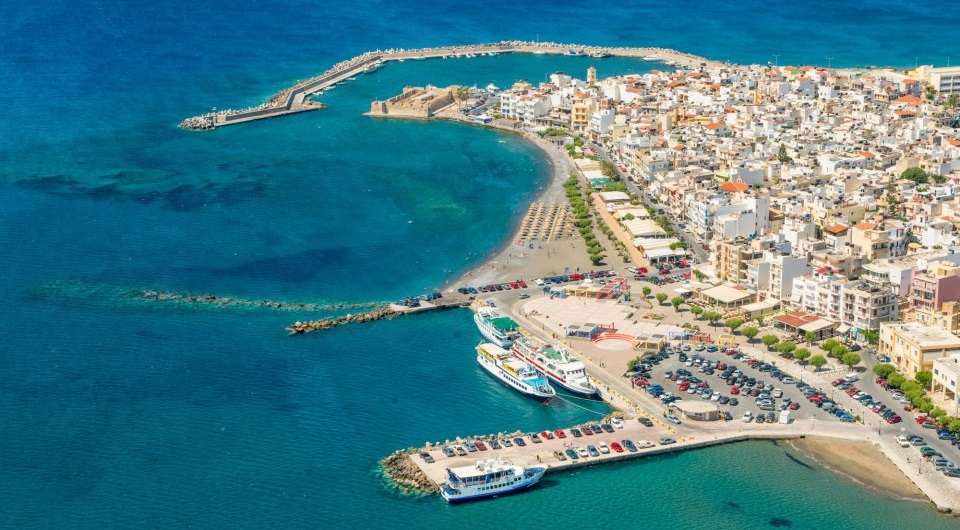
Ierapetra is considered to be the sunniest town in Greece. The average annual temperature is 19.7°C. After the island Karpathos with its 20.1°C temperature, this is the second warmest place in the whole country, according to the Hellenic National Meteorological Service. The climate is really very attractive.
Today Ierapetra is a popular and growing resort. There are many different hotels, shops, restaurants, bars, clubs. Most of them are concentrated on the coast, which is considered to be the cleanest and most beautiful in Crete. In the summer season the air temperature here reaches the highest levels among all Cretan resorts.
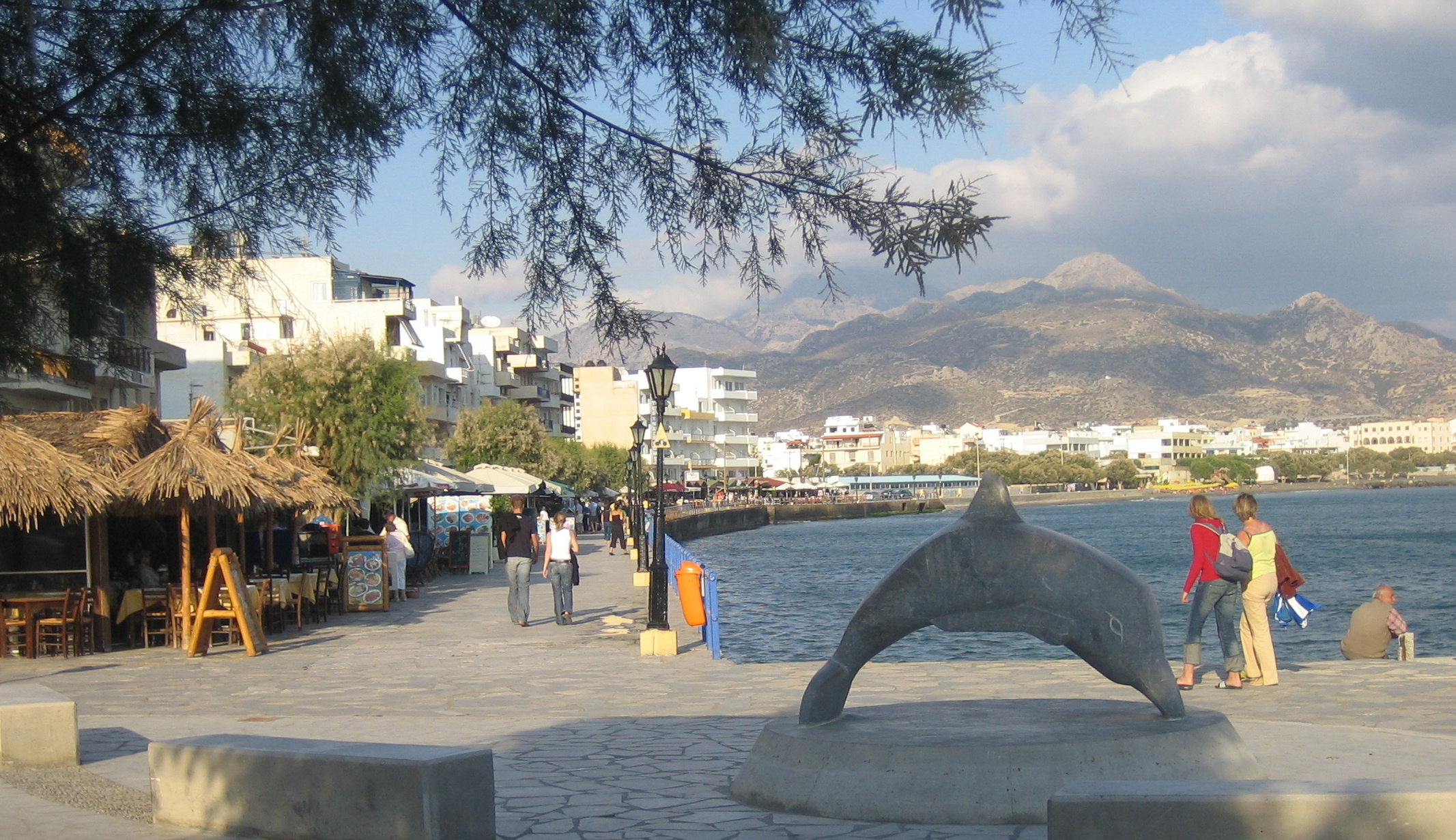
Ierapetra has beautiful beaches with a total length of 52 kilometers. Therefore, the international certification program Quality Coast EUCC justifiably included the region of Ierapetra among the 50 most attractive tourist destinations in Southern Europe.
One of the picturesque places intended for evening walks of residents and tourists is the well-maintained wide embankment of the town. The main part of the promenade starts from a long beach in the eastern part of Ierapetra Bay and continues to the small city port from which ships leave for the island of Chrissi during the summer season. Further west, along the coast, you can walk to the promontory with an old Venetian fortress, a lighthouse, a port for fishing boats and a closed marina. Along the embankment there are several churches, modern elite hotels, old stone houses, expensive restaurants, traditional tavern, many cafes and souvenir shops.
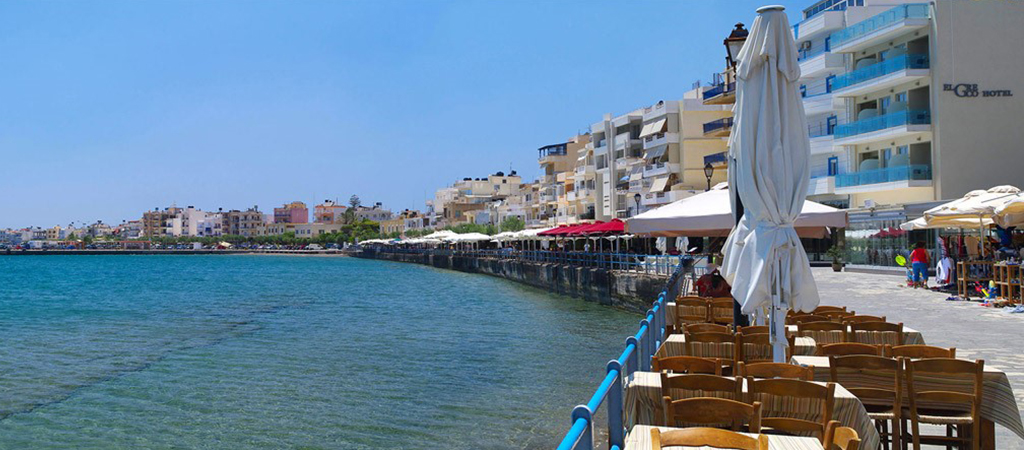
Ierapetra is divided into two parts: in the Old Town (Kato Mera) and the New Town (Pano Mera) with modern 3-4-story buildings. The Old Town is home to the main attractions; and its appearance – narrow paths, two-story houses, and dead ends – has not changed over the past decades. The hallmark of the Old Town is the Venetian sea fortress of Kales, a corruption of Turkish “kale” which means “fortress”. This rather powerful structure allows for an assessment of the engineering and construction potential of ancient builders. There are there the famous Napoleon’s House where he has stayed for a night in 1798, an old Ottoman mosque and a church of Agios Georgios. This built in 1856 church is one of the most interesting in Crete, as all its domes were made of wood mainly using cedar.
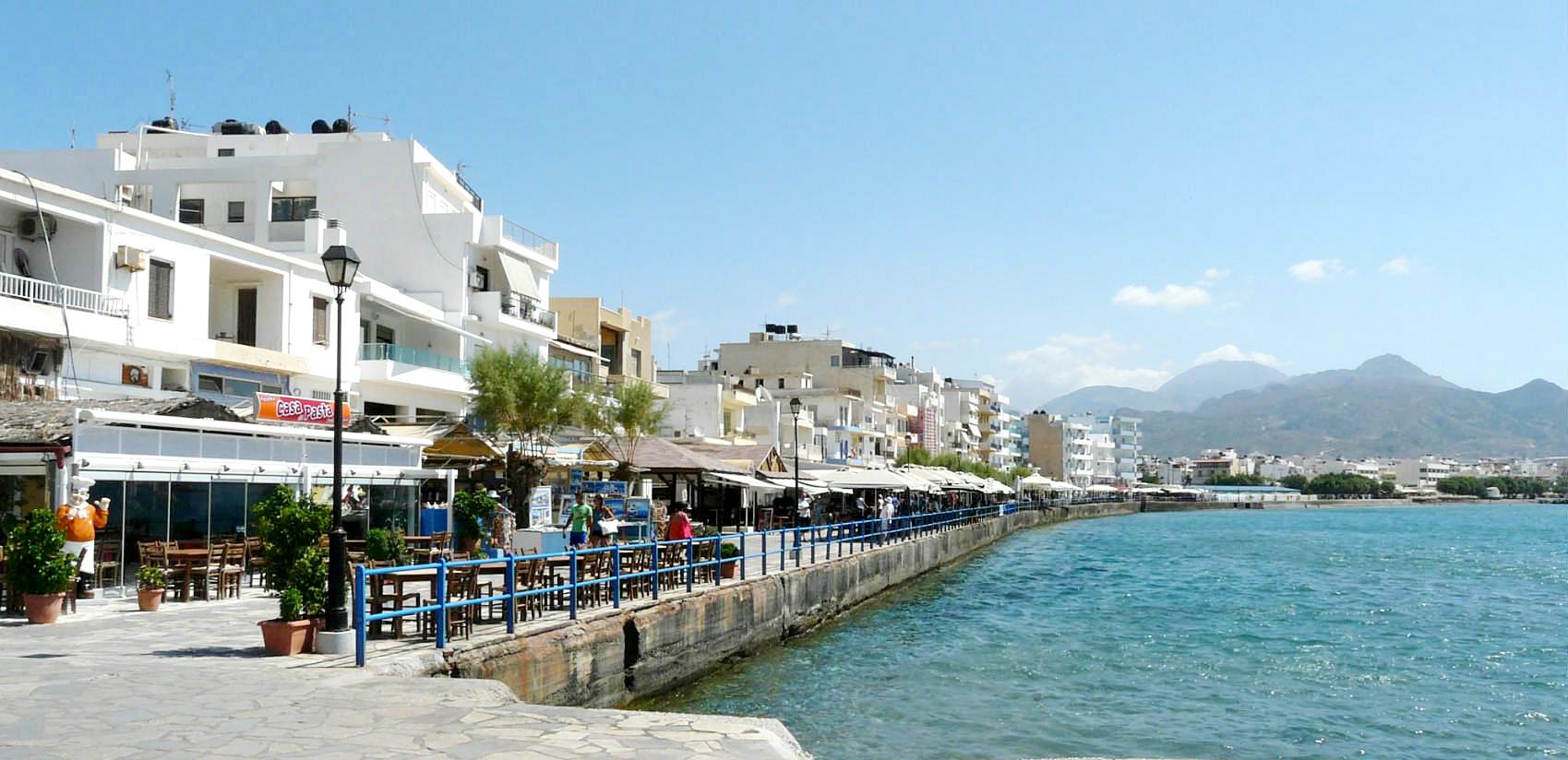
How to get there? The way from the airport of Heraklion is 94 km long, and from the one of Sitia is 59 km. There are also frequent ferries from Piraeus of Athens to the ports of Sitia and Heraklion. A journey by car from Heraklion takes 1.5 hours and from Sitia no more than 1 hour.
You will certainly not regret coming here.
History of Ierapetra
Ierapetra is very ancient, more thousand years old. It is known in the history of Crete since Minoan times. During antiquity it was the largest city of the island and originally called Kyrva. Later the city was renamed Pytna and finally Hierapytna which means “sacred hill” because of a temple that stood there in ancient times. Hierapytna was one of the most important ports of Crete, taking advantage of its strategic position for trade with countries of the Eastern and Southern Mediterranean. During the Hellenistic period (IV-I centuries BC) the city even minted its coins. Until the 2nd century it controlled more lands than any other Cretan city.
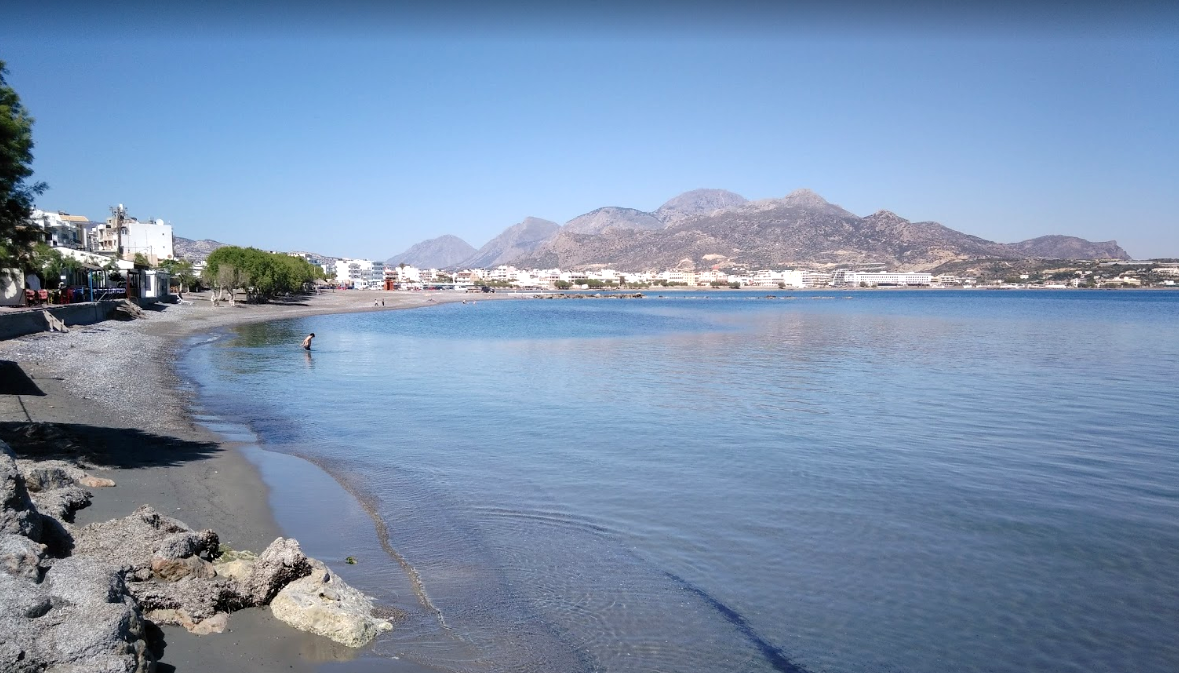
In 66-67 BC, the power of this city-state was broken by Romans who conquered and destroyed it—the last free city in Crete, but then they constructed it anew, returning its former glory. It is known that it had two theaters, an amphitheater, temples, an aqueduct; and numerous statues adorned the city.
In Byzantine times it was diocesan town with Sitia and Mirabello belonging to the same diocese. In 824 an Arab raid caused widespread destruction to it; and for a long time the place was used as a transfer base for piratic Arab operation in the Libyan Sea.

The town was rebuilt during the Venetian rule. It was then that Hierapytna received its modern name; and a coastal fortress was erected, although local legends say about very early construction of it by the Genoese pirate Pescatore in 1212.
Ierapetra was repeatedly raided and destroyed, but the main disaster was the 1780 earthquake which destroyed the entire city almost completely along with the Venetian fortress. The city and the fortress were restored over time, but there is almost no evidence of the city’s rich history. The exhibits of the Archaeological Museum of Ierapetra in the former building of a school for Muslim children are not able to fully illustrate the life of the ancient city.
Greenhouse center
Ierapetra is an ecologically clean area of Crete. Moreover, this area is one of the most fertile not only in Crete but also in Greece. Almost half of the locals is engaged in growing vegetables in greenhouses and exporting vegetables throughout Europe. Because of grown under the southern sun, they taste excellent and therefore are in great demand.
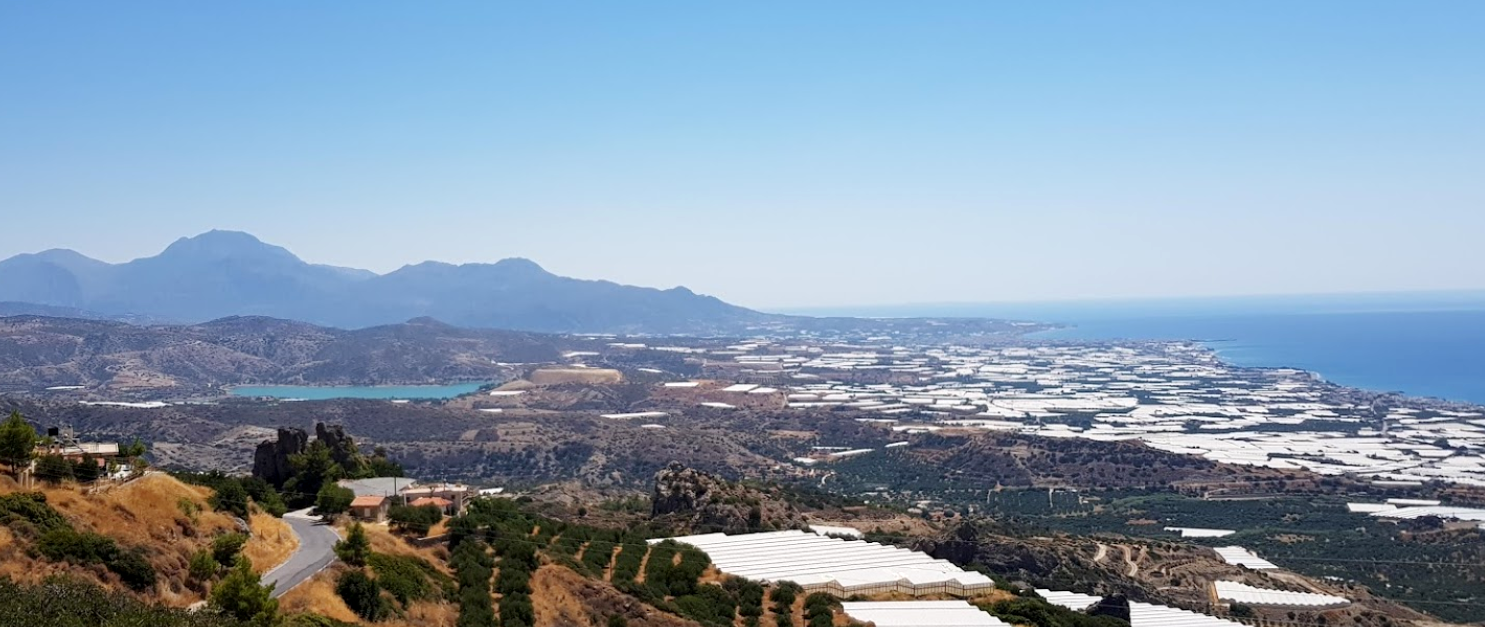
The greenhouses are on an area of about 15 sq. km to the west from the city to the town of Goudouras: between Ierapetra and the small resort village of Myrtos and also, to a lesser extent, in the east.
In the community of Ierapetra, 5 km from the city, a dam was built and in 1986 the artificial lake Bramiana created to provide water to the local greenhouses during dry summers. The lake is the largest wetland in Crete and has become a wildlife sanctuary known for its birds. The places near the lake are very quiet: there are greenhouses around and practically no tourists. Swimming is prohibited; and there is a dirt road around suitable to a 2-2.5 hours walk along.
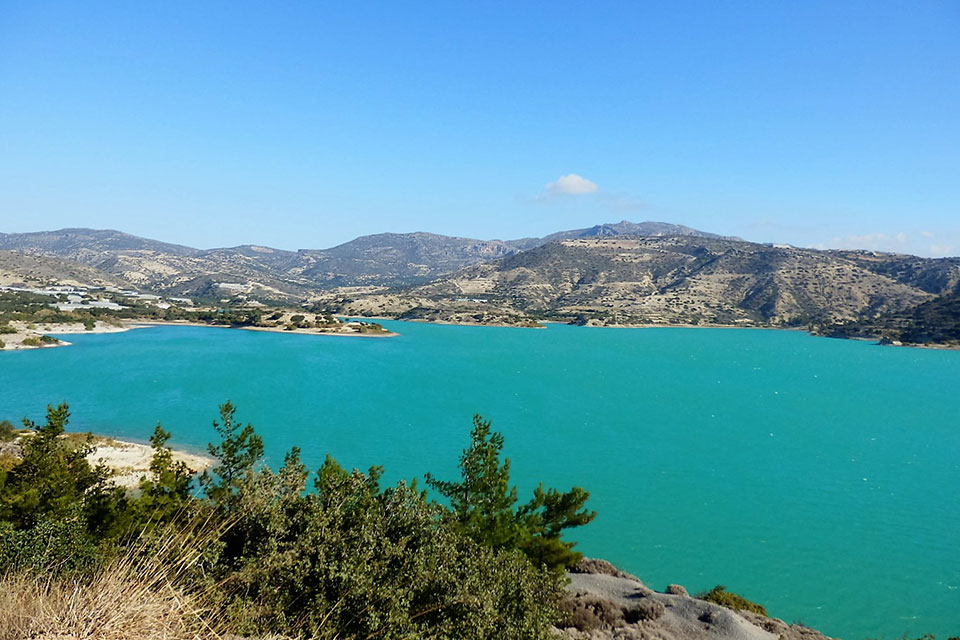
Over the course of several decades, Bramina has developed into an important resting place for migratory birds in southern Europe. Thousands of birds gather on the lake in spring and autumn. 214 different bird species have been recorded here, constituting an important ecosystem. In winter, the lake becomes home to birds that remain to winter in Crete, many of which are endangered (glandular ducks, black stork, lanner falcon, etc.).
Thanks to greenhouse products, Ierapetra has developed into an agricultural export center and one of the richest communities in Crete.
For those who are interested in Ierapetra, we recommend the site Discover Ierapetra: www.ierapetra.gr
Composed by V.Dubrovsky, 2020-11-10